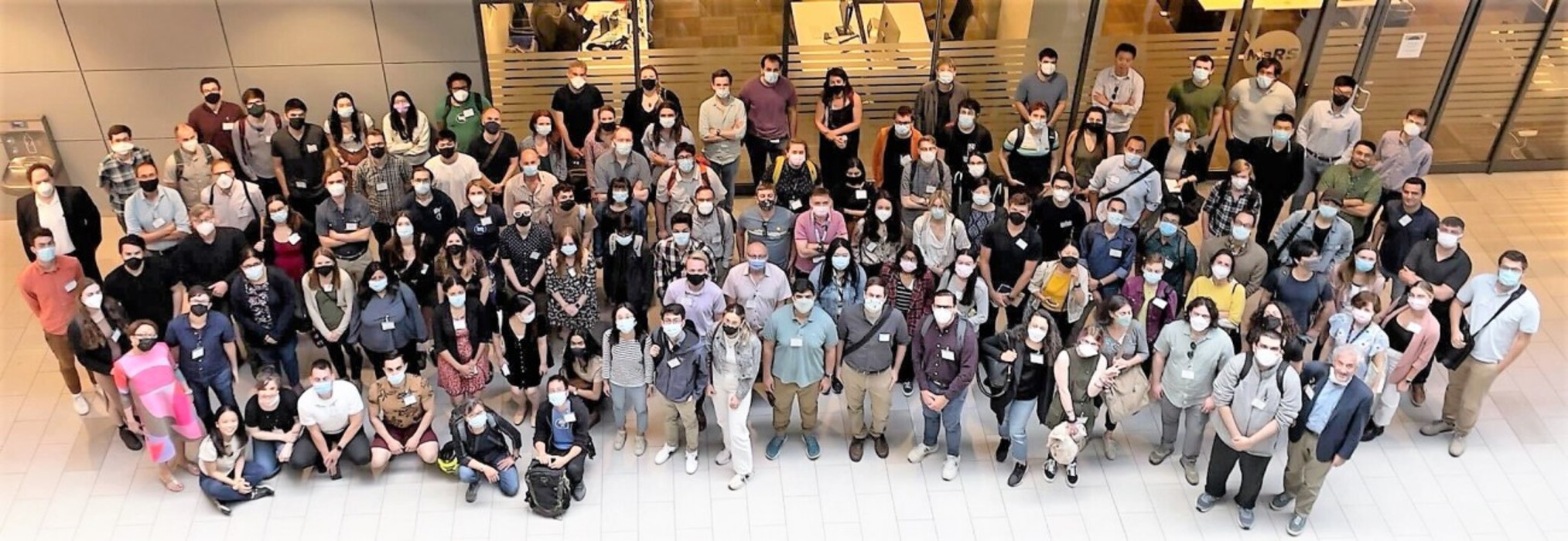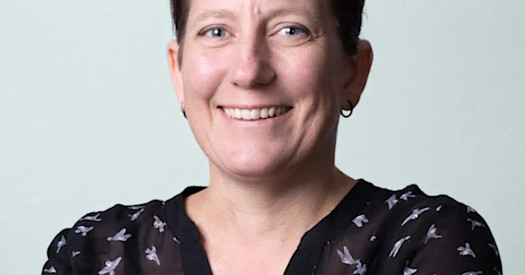 Participants in the 2022 Mutational Scanning Symposium in Toronto
Participants in the 2022 Mutational Scanning Symposium in Toronto
By BBI Communications
The first annual report of the Atlas of Variant Effects Alliance, an international consortium of more than 400 geneticists, biologists, clinicians, mathematicians, and other scientists, outlines several highlights from 2022 and looks ahead to opportunities and challenges in 2023. The 15-page report is available on the Alliance's website.
Highlights include the fifth annual Mutational Scanning Symposium, held last June in Toronto, with representatives from 20 nations; 133 individuals attended, with an additional 229 participating virtually in real time. There were two keynote speakers: Drs. Doug Fowler, a BBI member and professor of Genome Sciences at the University of Washington; and Clare Turnbull, a professor of Translational Cancer Genetics in the Division of Genetics and Epidemiology at the Institute of Cancer Research in London.
“I had very high expectations, because I love this meeting,” Fowler said. “From super high-quality talks, to fantastic discussions with colleagues, to the idyllic banquet, the meeting was a smashing success.”
Fowler and Turnbull in June joined symposium organizer Dr. Fritz Roth, professor and principal investigator at the University of Toronto’s Department of Molecular Genetics, in a Q&A BBI published summarizing the three-day session.
The sixth annual symposium will be held July 13th and 14th in-person and virtually at the Wellcome Sanger Institute in the UK. BBI will be publishing updates on speakers and the program over the next few months.
The Alliance in 2022 also issued a call among its members for papers as part of a special collection on multiplex assays of variant effect expected to be published in February in the journal Genome Biology.
This collection will highlight the power of approaches of multiplexed assays of variant effects (MAVEs) as well as computational tools for understanding gene function, disease variants, and biology. The AVE Executive Committee is also submitting a perspective piece providing context for the collection. The journal’s editors are open to further submissions to be published on a rolling basis. Anyone hoping to submit a paper, please contact Dr. Dave Adams of the Wellcome Sanger Institute at (da1@sanger.ac.uk) or Lara Muffley, the Alliance’s Program manager, at (muffley@uw.edu).
Membership of Alliance exceeded 400 in 2022, following the symposium in Toronto. Members reside in 30 nations on six continents. The report also outlines the Alliance’s three primary objectives:
-
Convening data generators, curators and consumers, along with funders and other stakeholders from across the globe, to set research standards, share tools, and develop strategy;
-
Facilitating the production of a collection of comprehensive variant effect maps that could ultimately assist in the diagnosis, prognosis, and treatment of disease; and
-
Creating community-driven, democratic resources for sharing, discovering, and analyzing large-scale variant effect data.
The “community driven” aspect of the Alliance is important, as well as projects, or “workstreams,” to help meet those three objectives, Fowler said.
'The Alliance is largely a bottom-up organization, and the workstreams reflect that.' Dr. Doug Fowler
“The Alliance is largely a bottom-up organization, and the workstreams reflect that,” he said. “Although the executive committee devised the workstream titles and helped to seed each workstream with members, each workstream came up with its own roadmap and strategic goals. The workstreams have taken on a range of tasks, some of which are quite unexpected. They're not all that related. In fact, they are more interlocking.”
According to the Alliance’s executive summary, there are three priorities over the next three years to meet the organization’s goals. Those priorities are: sustainment; completing initiatives; and growth. Fowler commented on the challenges ahead and how to overcome them.
“There are two big challenges we are facing,” he said. “The first is how to mobilize and leverage our members. We have about 400 members, but most are not involved in the workstreams. I suspect that many, especially more junior researchers, would like to be more involved. We can overcome this challenge by, one, finding members interested in recruiting and leading initiatives and empowering them to do so; two, devolving some decision-making power; and, three, growing the workstreams.
“The second big challenge is funding. We would like to attract funding to sustain the operations of the Alliance and also to do some of the experiments that need to be done. The former is not such a big number, but the latter could, potentially, be very large. I think overcoming this challenge will require a concerted, international fundraising effort, and we are just gearing up to do that.”
The AVE Alliance was established in 2020; this is its first annual report. BBI will continue covering the Alliance on its website and monthly newsletter.


